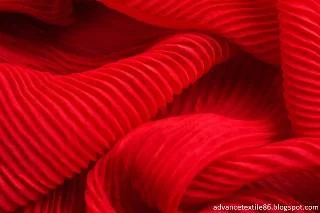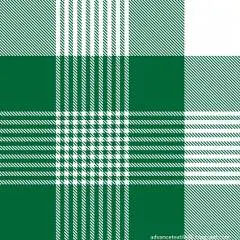Different types of lightweight fabric that is used in textile-
Batiste fabric
Batiste
fabric is the finest fabric that is made from cotton, wool, polyester, or a
blend and is the softest of the light opaque fabrics. Batiste fabric is
balanced plain weaves, made of cotton cloth or linen-like cambric. Batiste
fabric was often used as a lining fabric for high-quality garments. Batiste is
also used for handkerchiefs and underwear. Lightweight opaque fabric is very
thin and light but not as transparent as sheer fabric. The difference between
the two is not always pronounced. End-uses include clothing and furnishings.
Organdi, Lawn, and Batiste started with the same grease product. They differ from
each other in the way they end up. Lawn and Batiste acid do not take the finish
and thus, remain opaque. Better quality fabrics made of combed yarn.
Georgette
Georgette is the perfect, light-weight, dull-finished crêpe fabric called after the early twentieth-century French garment maker Georgette de la Plante. Originally made from silk, Georgette is made with highly curved yarn. Its characterized curved surface is made of S- and Z-twist yarn alternately in both warp and weft. It is made in solid colors and prints and is used for saris, blouses, dresses, evening gowns, and trimmings. It has a very light and notched arm, making it most suitable for spread clothing and unsuitable for more structured pieces. Silk georgette is relatively fragile, but varieties made with synthetic fibers can be more resilient to damage. The crepe style S- and Z-twist weave makes the fabric less lustful than spring and intimately related chiffon.
Charmeuse fabric
Charmeuse fabric is a lightweight fabric woven with a satin weave that warps threads running
over four or more backing threads. These float threads give the front of the
fabric a smooth, glossy finish, while the back has a dull finish. The charmeuse
differs from plain satin in that the charmeuse has a different proportion of
floating threads and is lighter in weight. Charmeuse fabric can be made of
silk, polyester, or rayon. The practice of weaving from mixed fibers is
becoming more common. It is used in women's clothing such as lingerie, evening
gowns, and blouses, especially a biased-cut dress. It is sometimes used in menswear.
Chiffon fabric
Chiffon fabric is a lightweight, balanced plain-weave perfect fabric like gossamer,
alternative S- and Z-twist crepe yarn woven. The twist in the crepe yarns
throws the fabric a bit on both sides after weaving, giving it a slightly stretched
and somewhat rough feeling. Chiffon fabric is used in most evening wear
especially as an overlay to give the gown an elegant and floating look. It is a
popular fabric used in blouses, ribbons, scarves, and underwear. Like other
crop fabrics, chiffon is difficult to work with due to its light and slippery
texture. Because of this delicate nature, the chiffon needs to be washed very
slowly.
Dimity fabric
Dimity
fabric is a lightweight, perfect cotton fabric, historically used, with at
least two twisted threads thrown into the relief to form a fine cord. It is
usually a fabric used for bed upholstery and curtains and is usually white,
although sometimes a pattern is printed on it in color. It is woven into stout
and raised patterns in texture. Originally the dimity was made of silk or wool,
but since the 18th century, it has been woven almost exclusively of cotton.
Eolienne fabric
Eolienne
fabric is a lightweight fabric with a ribbed surface. Usually made by combining
silk and cotton or silk and bad weave and weave, it is like poplin but also
lightweight. Common with poplin, it was basically a garment fabric and a
combination of heavy and lighter yarn looms created a brocade-like surface
decoration and lustrous finish. This makes it popular for formal gowns like
wedding dresses, especially in the Edwardian era. The addition of wool or
cotton created it less costly than pure silk when creating a luxurious effect.
Madras fabric
Madras
fabric is a lightweight cotton fabric commonly used for summer wear as patterns,
shirts, dresses, and jackets. The patterned fabric takes its name from the
former name of the city of Chennai in South India. Perfectly hand-woven from
the colorful yarn of authentic Indian Madras native vegetables. Home-spun by
native weavers, no two plaids are exactly the same. When washed with mild soap
in mildly hot water they are fragrant and guaranteed in distinct muted and worn
colors for mixing.
Madras
fabric today is available as regular cotton, seersucker, and patchwork madras
as tartan patterns, meaning to cut the cloth of several madrasas into squares
or rectangles and create a mixed pattern of different plaids to re-sew them
together. Cotton Madras fabric is woven from a fragile, short-stemmed cotton
fiber that cannot be combed, is simply carded, resulting in thick stains of
yarn known as slabs that give Madras its unique structure. The cotton is woven
into yarn, woven and dyed by hand after it is finished in about 200 small
villages in the Madras region.
Muslin fabric
Muslin fabric is a finely woven cotton fabric that weighs a wide range from delicate
to perfect sheets. It got its name from the city of Mosul in Iraq, which the
Europeans believed to be its origin, but its source now proves that it was
much earlier in Dhaka, especially in Bangladesh. Initially, the muslin fabric
was woven with unusually fine handspun yarn, especially in today's Bangladesh.
It was imported to Europe in the 17th and early 18th centuries. Under British
rule, the British East India Company could not compete with the local muslin
fabric of the Indian subcontinent in its own exports. The colonial government
was in favor of importing British textiles. Our colonial authorities tried to
suppress the local weaving culture. Muslin production was greatly reduced and knowledge
of weaving was almost wiped out. It is alleged that in some cases weavers were
assembled and their thumbs were cut off, although this has been refuted as a
report since 1772. The Bengali muslin industry was suppressed by various
colonial policies. As a result, the quality of the muslin was damaged and the
fineness of the fabric was lost.
Scrim fabric
A
scrim fabric is a woven material, either a fine woven lightweight fabric spread
in the theater or a heavy, thick woven material used to reinforce both building
and canvas. Scrim fabric is a light textile made from cotton or sometimes flax.
It is lightweight and translucent, which means it is often used to make
screens. The fabric can be used for bookbinding and upholstery. Scrims have
also found widespread use in theaters. The different varieties used for special
effects are rightly called Sharktooth creams. However, in the theater, a writer
can refer to any such thin screen and make it from a variety of materials. The
Scream has a rectangular loom that is about the same size as the window screen
when opened.
Bobbinet
is a kind of scrim that has hexagonal holes and it comes in different types of
holes. It is used for several lighting effects in the film and theater
industries. Clothing or scrims are usually used to cover the face or head. This
allows the wearer to be found while preventing others from knocking.
Voile fabric
Voile
fabric is a soft, perfect fabric, usually, linen or polyester blended with 100%
cotton or yarn. Due to the lightweight of the French word for curtains, the
fabric is mostly used in soft decorations. In tropical climates, voile is used
for window treatment and mosquito nets. When used as a screen element, Voile is
similar to a net screen. It’s available in a variety of patterns and colors.
Because of their semantic integral parental quality, voile screens are made
using title tape which is less easily noticeable through the fabric. Voile
fabric is also used in dressmaking, either in multiple layers or across a
second element. It's like chiffon.















0 Comments